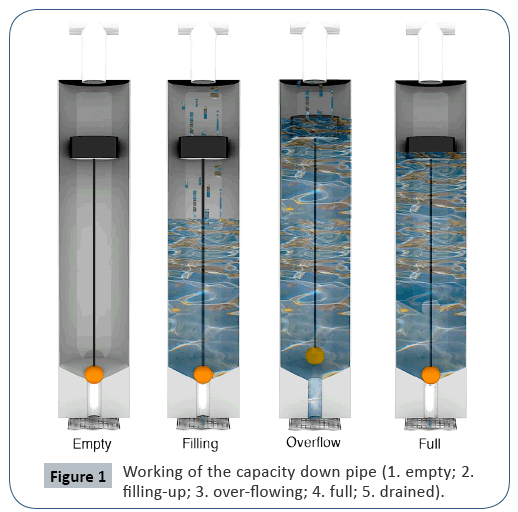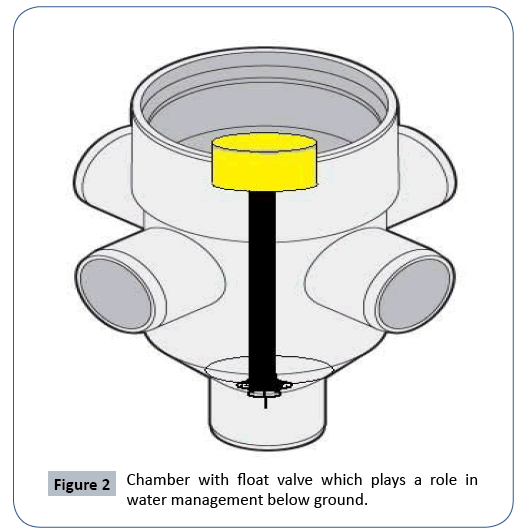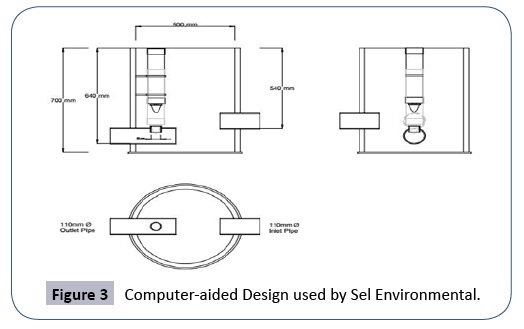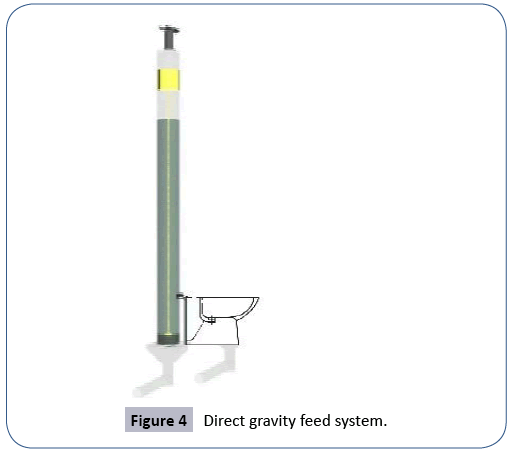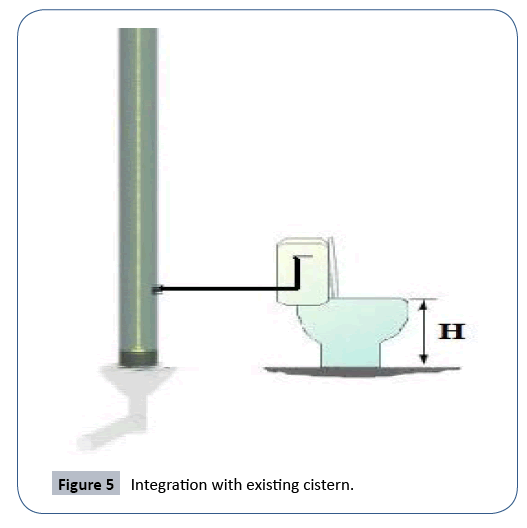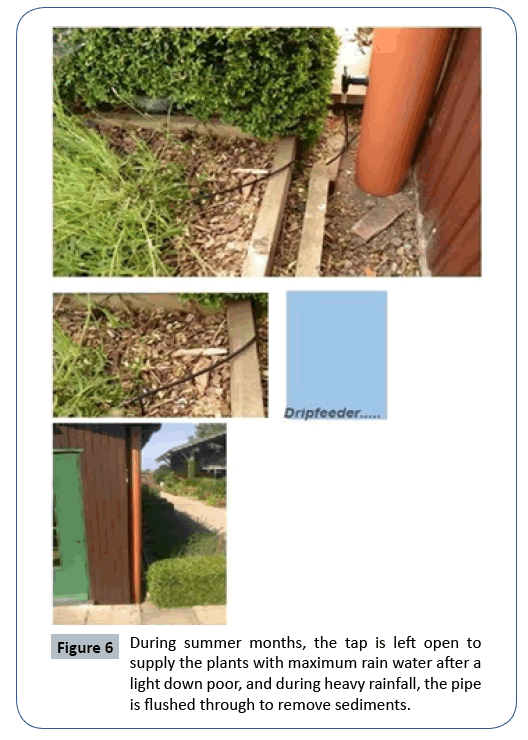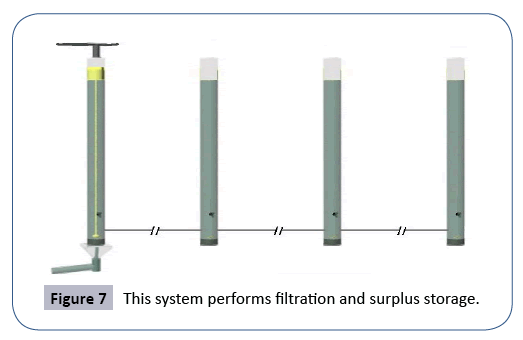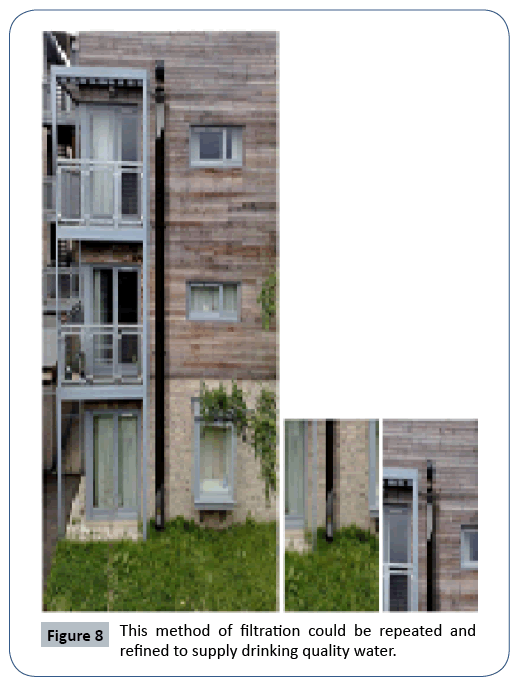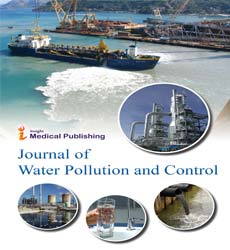Capacity Down Pipe Sustainable Drainage System
1Division of Water Resources Engineering, Department of Building and Environmental Technology, Lund University, Lund, Sweden
2Civil Engineering Research Group, School of Computing, Science and Engineering, The University of Salford, Newton Building, Peel Park Campus, Salford, Greater Manchester, United Kingdom
3Department of Civil Engineering Science, School of Civil Engineering and the Built Environment, University of Johannesburg, Kingsway Campus, Auckland Park, Johannesburg, South Africa
4Division of Watering Pipe Limited, New York, United Kingdom
- *Corresponding Author:
- Miklas Scholz
Professor, Faculty of Engineering
Division of Water Resources Engineering
Department of Building and Environmental Technology
Lund University, Lund, Sweden
Tel: 0044-7765464263
E-mail: miklas.scholz@tvrl.lth.se
Received Date: February 10, 2018; Accepted Date: February 10, 2018; Published Date: February 18, 2018
Citation: Scholz M, Frost KST (2018) Capacity Down Pipe Sustainable Drainage System. J Water Pollut Control. Vol.1 No.1:3
Abstract
This article describes a water storage and management device. The new technology is centered on a float operated valve. The valve design allows for remote control of a liquid medium with a container. Fluid control device CDP originated to solve the problem of storing water in a space restricted area. The development of the float valve allows the container to self-manage the fluid content.
Keywords
Fluid control device; Sustainable drainage system; Watering pipe; Stormwater; Green design house
Introduction
Sustainable drainage systems (SuDS) are based on expert opinion supported by descriptive guidance documents and the availability of management techniques. The aim of this paper is to explore the novel Capacity Down Pipe SuDS technique in terms of its design, operation and integration with other SuDS techniques. The critical interest to future cities and from current water industry operators remain flood control and water security [1]. Particularly for fitting and retrofitting SuDS, and, water storage for the domestic housing market but also commercial and agricultural environments [2]. These are growing concerns. The paper proposes the application of SuDS in the form of Capacity Down Pipe systems both above and below ground.
Capacity down pipe
Capacity down pipe technology is a new water management device used by the company Watering Pipe Ltd. in the recently launched product range, Watering Pipe. The workings of the system are shown below. The system can reduce flooding by storing or redirecting roof run-off water. The overall amount can be significant considering that typically about 20% of urban areas comprise roof tops. The stored water can be recycled, reducing the consumption of portable water (Figure 1).
Depending on the height and diameter differing volumes of water can be stored within the capacity down pipe system. The rainwater or grey water is stored within a compact space with a minimum footprint. Considering that a traditional down pipe has roughly the same footprint as the capacity down pipe system, no additional space is lost due to the novel management technique [3-5].
Also note the stored water is being refreshed during a stronger rainfall event. When the pipe is full, the overflow system cleans out any sediment or sludge that has built-up at the base of the container preventing water contamination [6]. And the height gives a good head of pressure this acts on the release flow giving it a similar effect found in flushing toilets.
Capacity down pipe flow control chambers
The control device called a float valve also plays a role in water management below ground. The problem overcome in underground storage tanks relates to the release of stormwater over a gradual period [7,8]. This is achieved by using a none seal plug to allow fluid to be released. The containers storage volume is controlled until the container is full and then overflow condition is reached. The valve also can retain the fluid indefinitely for use on the premises (Figures 2 and 3).
Figure 2: Chamber with float valve which plays a role in water management below ground.
Going one step further this storage cylinder design could be scaled up to storm tank sizes. This would depend on the topography of the urban area [9]. Providing the future cities with a new tool in the battle against ever increasing flood problems. Storm drain structures described are integral in modern cities [10]. On this topic of retaining excess water should the ice caps melt and every structure in the world has a built in water retention system then the sea levels would in theory be under human control.
Back to the watering pipe ethos of saving the mains water supply for consumption. This volume of rainwater stored on each home can provide a useful bucket/container of water when otherwise it would have been drawn from the mains supply. The amount used for washing the car or windows. For filling a watering can or pet water bowl. A bucket of water could be saved on every home at least every month.
Further development of the CDP concept
So what else can be achieved with a CDP drainage system, the Holy Grail for the design is the toilet. The aim is to redirect stormwater to use and what better use than to flush the toilet (Figures 4 and 5) [11].
The Watering Pipe is compatible with drip feed irrigation which provides green areas with water. This has a significant environmental impact (Figure 6) [12].
This system can be interconnected and, using one control CDP with other pipes in sequence, can perform filtration and surplus storage in an otherwise wasted space. CDP can directly supply toilets filters and washing machines with high pressure water [13]. But this method of filtration could be repeated and refined to supply drinking quality water (Figures 7 and 8).
This system is potentially good for poly tunnel and green house design as well as other farming methods.
Conclusion
In order to reduce the risk of combined sewer overflow pollution, additional water management capacity is needed for the capture and control of stormwater, which would alternatively enter the sewer network. By using the Watering Pipe product instead of the standard down pipe across a catchment area, the stormwater impact on existing combined sewer overflow networks can be reduced. In a flooding event, stormwater causes a combined sewer overflow to divert diluted raw sewage into the natural environment. The capacity down pipe with its float valve inside can remotely retain and control water flows, thus giving extra storage volume and control to mitigate flood events. The Capacity Downpipe Flow Control Chamber is a below-ground solution to increase rainwater retention volume within the sub-surface drainage network. This will allow for the controlled harvesting of rainwater, which is usually been considered as rather clean wastewater suitable for, for example, watering gardens and flushing toilets.
References
- Scholz M (2006) Wetland systems to control urban runoff (1st edn.).Elsevier, Amsterdam, United Kingdom.
- Butler D, Davies JW (2004) Urbandrainage (2nd edn.). Spon Press, London, New York.
- CIRIA (2007) The SuDS Manual.
- CIRIA (2010) Planning for SuDS: making It happen.
- Scholz M, Corrigan NL,Yazdi SK (2006) The glasgow sustainable urban drainage system management project: Case studies (Belvidere Hospital and Celtic FC Stadium Areas). Environmental Engineering Science 23: 908-922.
- Nanbakhsh H, Kazemi-Yazdi S, Scholz M (2007) Design comparison of experimental storm water detention systems treating concentrated road runoff. Sci Total Environ 380: 220-228.
- White I, Alarcon A (2009) Planning policy, sustainable drainage and surface water management: A case study of Greater Manchester. Built Environm 35: 516-530.
- Imran HM, Akib S, Karim MR (2013) Permeable pavement and stormwater management systems: A review.Environ Technol 34:2649-2656.
- CIRIA (2004) PUB C609 Sustainable drainage systems. Hydraulic, structural and water quality advice.
- Scholz M (2004) Case study: Design, operation, maintenance and water quality management of sustainable storm water ponds for roof run-off. BioresourTechnol 95: 269-279.
- https://www.gov.uk/government/uploads/system/uploads/attachment_data/file/7772/pps25guideupdate.pdf
- Walsh CJ, Fletcher TD, Burns MJ (2012) Urbanstormwater runoff: A new class of environmental flow problem.PLoS ONE 7: e45814.
- Ellis JB, Shutes RBE, Revitt MD (2003) Constructed wetlands and links with sustainable drainage systems.Environment agency, Bristol, UK.
Open Access Journals
- Aquaculture & Veterinary Science
- Chemistry & Chemical Sciences
- Clinical Sciences
- Engineering
- General Science
- Genetics & Molecular Biology
- Health Care & Nursing
- Immunology & Microbiology
- Materials Science
- Mathematics & Physics
- Medical Sciences
- Neurology & Psychiatry
- Oncology & Cancer Science
- Pharmaceutical Sciences
